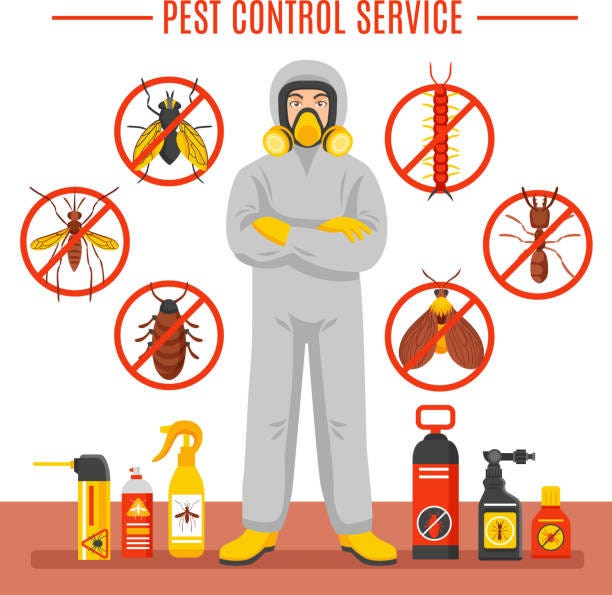Trustworthy A1 Bed Bug Exterminator Charlotte - Get Rid of Bed Bugs Quick
Trustworthy A1 Bed Bug Exterminator Charlotte - Get Rid of Bed Bugs Quick
Blog Article
Bed Insect Therapy Breakdown: Contrasting Chemical Vs. Non-Chemical Solutions
In the realm of bug control, especially when managing the consistent issue of bed pests, the choice in between chemical and non-chemical treatment solutions can be a pivotal one. Both strategies supply unique advantages and downsides, affecting variables such as performance, safety and security considerations, and overall expense. By examining the nuanced details of each method, a more clear understanding of which path to go after in dealing with a bed pest infestation can be attained.
Efficiency of Chemical Therapies
Chemical therapies for bed bug problems have been commonly acknowledged for their powerful and rapid efficacy in eliminating these parasites. When taking into consideration the efficiency of chemical therapies, it is vital to understand that they can provide a extensive and fast solution to a bed pest issue.
Additionally, chemical therapies have the advantage of offering residual results, suggesting that they can remain to remove bed pests also after the initial application. This residual activity is especially beneficial in combating any kind of prospective re-infestations. Additionally, the rapid activity of chemical therapies can bring alleviation to individuals facing extreme bed insect invasions, permitting them to reclaim control of their living rooms promptly.
Safety And Security Worries With Chemical Solutions
One essential facet that calls for mindful consideration when using chemical solutions for bed pest therapy is making sure the safety and security of residents and the environment. Exposure to specific chemicals made use of in bed bug treatments can lead to respiratory system problems, skin irritability, or various other adverse responses, especially in people with pre-existing problems or sensitivities.
Furthermore, the ecological influence of chemical solutions is one more substantial factor to consider. Some pesticides utilized in bed insect therapies might be dangerous to advantageous insects, wild animals, and ecological communities if they seep into the dirt or water supply. It is important to make use of chemical therapies deliberately, complying with safety and security standards, and considering less poisonous alternatives to alleviate these risks and ensure the effective and safe monitoring of bed bug invasions.
Advantages of Non-Chemical Techniques
Taking into consideration the prospective safety and security issues and environmental influence associated with chemical services for bed bug therapy, exploring non-chemical approaches provides an appealing option with a number of unique advantages. Non-chemical methods provide a safer option for homes, particularly those with youngsters, people, or pet dogs sensitive to extreme chemicals. These approaches remove the threats of direct exposure to poisonous substances, reducing the potential for damaging health impacts. Moreover, non-chemical treatments are eco friendly, as they do not add to air or water contamination, making them a sustainable selection for parasite control.
Additionally, non-chemical options can be effective in targeting bed pests, consisting of hard-to-reach see post areas where chemical therapies might not penetrate. Techniques such as heat treatment, vacuuming, heavy steam cleaning, and mattress coverings give comprehensive obliteration without making use of hazardous chemicals. In addition, non-chemical methods can be much less disruptive, calling for very little preparation and permitting quicker reentry into treated areas. Overall, deciding for non-chemical bed insect treatment methods not only prioritizes safety and security and environmental management but additionally ensures thorough and reliable pest control.
Limitations of Non-Chemical Treatments

Additionally, non-chemical treatments typically call for several applications to attain successful obliteration. This can be time-consuming and might not constantly guarantee complete removal of all bed bugs and their eggs, particularly in hidden or hard-to-reach places.
Moreover, the success of non-chemical therapies heavily counts on appropriate implementation and thoroughness, which can be testing for people without professional know-how. Poor application of non-chemical methods may cause insufficient elimination, causing consistent invasions and the need for extra therapies.
For that reason, while non-chemical therapies have their advantages, it is vital to recognize these limitations and consider them when identifying the most reliable approach for taking care of bed insect invasions.
Cost Contrast: Chemical Vs. Non-Chemical Options
Given the restrictions connected with non-chemical treatments, an essential facet to examine in the context of bed bug monitoring is the cost contrast in between chemical and non-chemical choices. Chemical treatments normally include the application of insecticides by professionals, which can range from $250 to $900 per area, relying on the extent of the problem and the dimension of the area to be dealt with. In comparison, non-chemical treatments like warmth treatment or vapor can be much more pricey, with prices ranging from $1,000 to $6,000 for a whole home. While the first cost of chemical treatments may appear lower, numerous treatments might be required to completely eradicate the problem, potentially enhancing the total price. On the various other hand, non-chemical options might provide an extra green and sustainable remedy, although they can be cost-prohibitive for some individuals. Eventually, when considering the expense of bed bug therapy choices, it is very important to consider the ahead of time costs against the effectiveness and long-term sustainability of the selected method.
Verdict

Thinking about the potential security problems and environmental influence linked with chemical services for bed pest treatment, exploring non-chemical methods presents a promising alternative with a number of unique benefits.Offered the limitations associated with non-chemical treatments, a necessary element to examine in the context of bed insect monitoring Resources is the cost comparison between chemical and non-chemical alternatives. In contrast, non-chemical treatments like warmth treatment or heavy steam can be extra pricey, with costs ranging from $1,000 to $6,000 for an entire home. While the first price of chemical therapies might appear lower, several treatments might be required to fully get rid of the infestation, possibly raising the total cost.In conclusion, when comparing chemical and non-chemical bed insect treatment options, it is important to think about effectiveness, security, advantages, constraints, and price.
Report this page